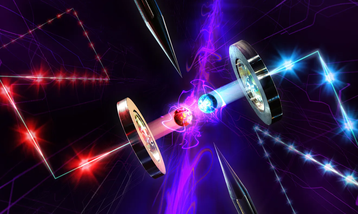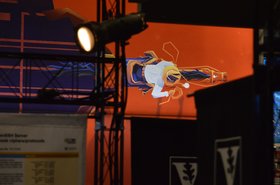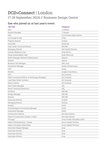European researchers have made a device that will enable quantum Internet connections. working with single photons and precise timing, over a distance of 50km.
Quantum computers could be made more powerful by extending them over a quantum Internet, but this means distributing quantum effects beyond the limits of a single machine. Scientists led by Ben Lanyon of the University of Innsbruck in Austria have shared quantum entanglement between two systems 50km apart, using a full quantum repeater device. The component parts of a quantum repeater have been shown before, but the team integrated them for the first time.
Quantum computers work by preserving quantum effects, and quantum Internet research aims to distribute these effects using "entanglement" - a phenomenon where quantum systems a long way apart are entwined so measuring one will affect the state of the other. Distributed entanglement effectively "teleports" quantum information
Satellite experiments have communicated quantum information using photons in free space, but the quantum Internet must use standard telecom-wavelength photons over fiber-optic links. To extend distribution along these networks requires a repeater, which can swap entanglement, so that it enters on one fiber and emerges on the other.
The team established entanglement across two 25km fibers independently, and used trapped ion qubits to store and swap that entanglement, establishing a quantum link across the whole 50km fiber. In theory, chains of these repeaters could transmit entanglement across greater distances, the researchers say, in a paper in Physical Review Letters.
“Pieces of a fully-fledged quantum repeater node have been shown separately before, but they had not all been combined together,” Lanyon commented to IEEE Spectrum.
The repeater node used two quantum memories, provided by calcium ions captured in an ion trap within an optical resonator, according to the University's release. Each of these emitted a single photon, which remained entangled with the ion in the trap, even while the photon was converted to 1550nm light used in fiber optic communications.
The photons entangled with the quantum memories were sent along two separate 25km cables (which were in fact still on their spools within the Innsbruck lab). When the repeater swapped entanglement between its trapped ions, this entangled the two photons at the end of the 50km cable together.
The system was able to convert single photons to the telecom wavelength to transmit entanglement. The quantum repeater was placed exactly halfway between the ends of a 50km cable. The researchers calculated what improvements would be needed to distribute entanglement over 800km - the distance between Innsbruck and Vienna.
"To make full use of entanglement and other quantum effects, quantum networks exchange signals at the level of single photons," commented Michal Hajdušek of Japan's Keio University, on the American Physical Society's Physics site. "As a result, attenuation in fiber is the dominant source of error in these systems. Photon loss, however, can be remedied using a set of intermediate network nodes, called quantum repeaters, which create a direct entangled connection between distant network nodes."
Hajdušek praised the team's achievement in splicing together two independent 25-km-long entangled links: "This distance is of the order required by practical quantum networks in the real world."
He added that the inclusion of memory in the repeater is vital: "Because of photon loss and other inefficiencies in the hardware, the generation of remote entanglement is a probabilistic process. Requiring that an end-to-end connection is established only if all short-distance links simultaneously succeed would lead to an exponentially small overall success rate. By storing short-distance entanglement, quantum memories allow failed links to repeat their attempts at establishing entanglement."
The team went on to show that it is in fact possible to share entanglement over 50km without a repeater, but it does not work nearly so well. The repeater transmitted 9.2 entangled photons per second, which fell to 6.7 per second without the repeater. This might sound like a small improvement over 50km, but the team calculated that communication rates without a repeater drop significantly beyond 100km, making repeaters necessary.
"Without a repeater, the success rate becomes vanishingly small for distances beyond 100 km," commented Hajdušek.
Quantum communications over 800km would require 17 repeaters, the team concluded. Using current hardware, the rate of shared photons would go down tenfold, but they indicated some realistic improvements in the hardware which could deliver usable communications over these distances in a short time frame.
Creating a full quantum Internet, however, will require more work, warned Hajdušek: "Two important lessons learned from a classical network, the Internet, must be kept in mind. First, good hardware by itself is not a sufficient path to scalable global communication. It must be accompanied by good software architecture. And second, good software takes a long time to mature."








